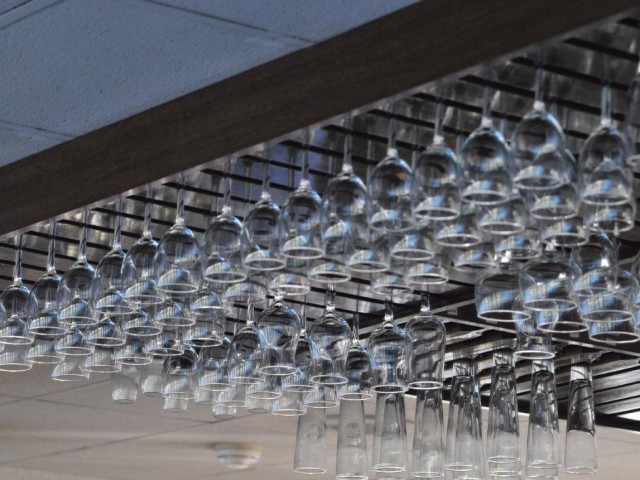
In a previous post we covered the basic for the of the cocktail or bar glasses as part of the tools required for a basic home bar. The difference is that with the possible exception of the Martini glass they do not influence the drinking experience. And even in the case of Martini it is only to keep it cold since it has no ice. On the contrary, for the wine the shape can influence the taste and the overall experience equally to the wine type and the serving temperature. In the wine the aromas are equally important as the taste and a badly selected glass can ruin the overall experience.
A wine glass is a type of glass stemware which is used to drink and taste wine. It is generally composed of three parts: the bowl, stem, and foot. Selection of a particular wine glass for a wine style is important, as the glass shape can influence its perception. It is important to note the most obvious, but often most neglected, part of the wine glass—the stem. The proper way to drink from the wine glass is to grasp it by the stem and drink. The purpose of this is so the temperature of the wine is not affected when holding the glass. This is achieved because the stem is not in direct contact with the wine. It would be more difficult to control the temperature of the wine if one held the glass by the bowl because it is in direct contact with the wine.
Wine glasses made of fused or cut glass will often interfere with the flavor of the wine, as well as creating a rough, thick lip, from which it is not as pleasurable to drink. Blown glass results in a better vessel, with a thinner lip, and is usually acceptable for casual wine drinkers. High quality wine glasses are often made of lead crystal, which is not technically crystal, but is merely called it through convention. Lead crystal glasses’ advantages are primarily aesthetic, having a higher index of refraction, thus changing the effect of light passing through them, but lead poisoning becomes a danger. Using lead in the crystal matrix also offers several advantages in the material’s workability during production. Wine glasses are generally not colored or frosted as this would impede the appreciation of its color.
For a complete set of glassware you will need three plus one glasses. One for red, one for white wine and one for Brandy and Cognac. The extra is for champagne, which I have as extra since champaign is not something that is consumed on daily base, but only in special occasions. So let ‘s get started…

The Red Wine Glass: Glasses for red wine are characterized by their rounder, wider bowl, which gives the wine a chance to breathe. Since most reds are meant to be consumed at room temperature, the wider bowl also allows the wine to cool more quickly after hand contact has warmed it. They are usually filled until the widest part so there is as much contact with air as possible to allow the evaporation that will transfer the aromas. The slighter narrow opening will concentrate the aromas to make them more intense. Red wine glasses can have particular styles of their own, such as:
Bordeaux glass: Tall with a wide bowl, and is designed for full bodied red wines like Cabernet and Merlot as it directs wine to the back of the mouth.
Burgundy glass: Larger than the Bordeaux glass, it has a larger bowl to accumulate aromas of more delicate red wines such as Pinot Noir. This style of glass directs wine to the tip of the tongue.
The White Wine Glass: White wine glasses are generally narrower, although not as narrow as champagne flutes, with somewhat straight or tulip-shaped sides. The narrowness of the white wine glass allows the chilled wine to retain its temperature for two reasons; The reduced surface area of the glass (in comparison to red wine glasses) means less air circulating around the glass and warming the wine. The smaller bowl of the glass means less contact between the hand and the glass, and so body heat does not transfer as easily to the wine. Also it is taller both at the stem, to allow larger area to hold the glass, and at the actual container so when the glass leans towards the mouth the surface that is exposed will increase dramatically, and at that very moment more aromas will be released.

Brandy (Cognac) Glass: Although the Brandy – Cognac thing is a post on it ‘s own I will briefly say a few things. Brandy is distillation of several varieties of wine that is aged in oak barrels from 3 to 30 years or more. The aging doesn ‘t increase the alcohol content but matures the taste and the aromas. Some certain varieties of the village Cognac in France, although they produce second class wine, when it is distilled produces excellent Brandy, known as Cognac. So all cognacs are brandys but not all brandys are cognacs. Due to the high level of alcohol and the aging, brandy is highly aromatic flavorful and the glass is very wide at the bottom part to allow evaporation and narrow at the top to condense the aromas. It is also filled up to the widest part and since it is strong the manufacturers prefer a pear like shape, placing the widest part as closer to the stem as possible. The stem is short so the hands will ouch the glass and the heat will evaporate some of it transferring therefore its aromas. Real connaisseurs use a glass that sits in a base that warms the brandy with the heat of a small candle.

Champagne Glass: The champagne flûte is a stem glass with a tall, narrow bowl. As with other stemware, the stem allows the drinker to hold the glass without affecting the temperature of the drink. The bowl is designed to retain champagne’s signature carbonation, by reducing the surface area at the opening of the bowl. The flute has largely replaced the champagne coupe or saucer, the shape of which allowed carbonation to dissipate even more rapidly than from a standard wine glass. Its smaller diameter also allows more flutes to be carried on a tray. Nucleation in a champagne glass helps form the bubbles seen in champagne. Too much nucleation will cause the carbonation to quickly fizzle out. A smoother surface area will produce fewer bubbles in the glass, and more bubble texture in the taster’s mouth. While most commonly used for sparkling wines, flutes are also used for certain beers, especially Belgian lambic and gueuze, which are brewed with wild yeast and often fruited. The tart flavor of these beers, coupled with their carbonation, makes them similar to sparkling white wines, and the champagne flute an ideal choice of glassware.

The champagne coupe or champagne saucer is the saucer-shaped stem glass once used for serving champagne, but now more commonly used for certain cocktails. Legend has it the shape of the glass was modeled on the breast of Marie Antoinette, Joséphine de Beauharnais, Madame de Pompadour, or one of several other French aristocrats, although this is almost certainly apocryphal. The glass was designed especially for champagne in England in 1663, preceding those aristocrats by almost a century.
How to select wine glasses: There are two basic rules of the wine glass selection (or for any other glass selection).
- I. It must be heavy and sturdy with clear class. Heavy denotes good quality glass that will tolerate some abuse in the dishwasher or maybe dropping. Buy from restaurant supply stores, so in case you break one you can always replace it. Their quality is not top, but they are great for simple home use.
-
II. Study the shape. You can select a glass for two purposes but according to the guidelines above, try to select a glass that will satisfy more criteria from both wine types.


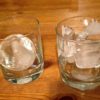
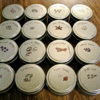
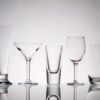
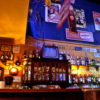
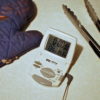
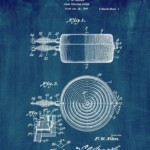
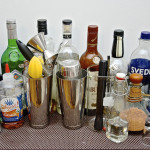
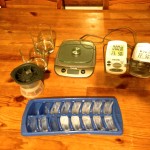
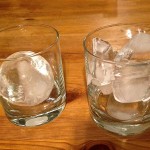
Leave a Reply